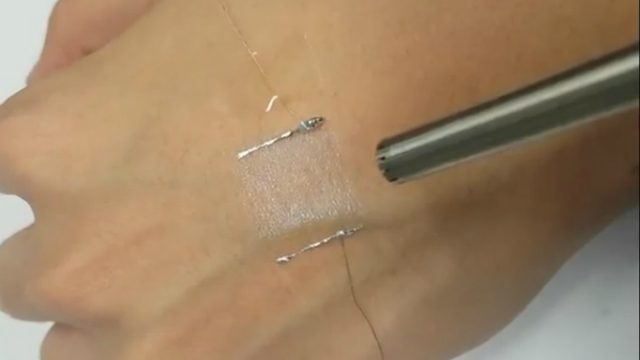A research team at the Ulsan National Institute of Science and Technology in South Korea has developed a nanomembrane with silver nanowires that can act as flexible speakers or microphones.
Researchers report that the clear, flexible nanomembrane can easily adhere to the skin. The novel film was produced in several steps from a network of nanowires and an elastic, transparent plastic film.
Light up your home with one of these intelligent light switches
Initially, the team had a network of 35 nanometers thick and up to 20-micrometer long silver nanowires on a layer of zinc oxide and distributed a transparent and flexible plastic connection over this network.
The result was a membrane about 100 nanometers thick, which could be easily detached from the zinc oxide layer. The researchers found an alternating voltage of ten volts at a frequency of ten kilohertz in this monostable and easily deformable membrane.
In response to the applied voltage, the nanomembrane heats up but cools down rapidly between the voltage pulses. This rise in temperature also heats the air directly surrounding it and causes vibrations depending on the frequency of the alternating voltage, which leads to audible sound waves.
The researchers varied the tension impulses according to the tone sequence of a violin concerto. Although the music from the Nanopar speaker was not loud, it was still easy to hear.
Based on the flexible nanomembrane, the researchers also built a microphone. They laid the film on a silicone rubber surface which was structured in the form of a silicone pyramid. Depending on the frequency of the incident sound waves, the membrane vibrated on the microstructured surface and formed electrostatic charges between 20 and 200 millivolts, which served as microphone signals.
Researchers tested the nano microphone by asking four people to unlock a smartphone with speech recognition software; only one of the test persons was the registered user. In more than 10 attempts, the system was able to detect the right voice more than 98 percent of the time.
The flexible nano-loudspeaker and microphone blades can be used, for example, in electronic clothing with integrated audio technology. However, researcher Hyunhyub Ko, lead author of the study, points out that there are still some obstacles to overcome before the commercialization phase is reached.
The researchers say they are very pleased with the performance of the nanomembrane and that the next step is to improve the sound quality and volume of the speakers, whose current sound is discrete, and to improve the accuracy of the microphone in speech recognition and differentiation between different voices.
Reference: Transparent and conductive nanomembranes with orthogonal silver nanowire arrays for skin-friendly speakers and microphones, Science Advances, 2018. https://doi.org/10.1126/sciadv.aas8772
